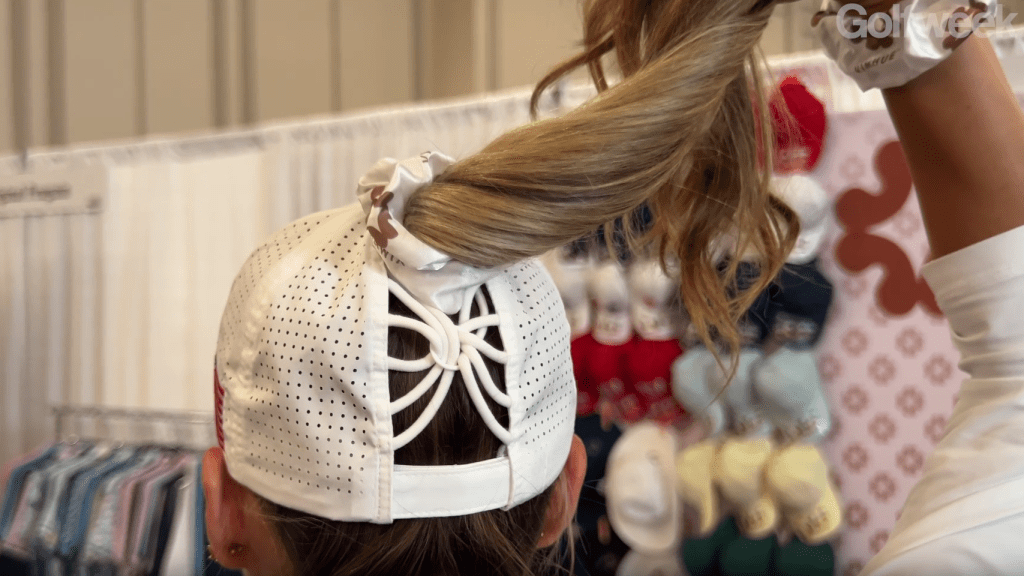[ad_1]
Nelly Korda’s Challenge at the US Women’s Open Course
Nelly Korda’s tournament was all but over before it had really begun. It wasn’t the fairytale ending Lexi Thompson was seeking. All too many dreams of the world’s best women lay broken and battered on Lancaster Country Club’s brutally sloping greens. Jenny Shin was lucky. She survived, but she summed up the mood of a halfway cut which left so many of the game’s stars sitting at home for the weekend.
“This leaderboard is shocking,” Shin wrote. “I find it sad to see some of the best players with a double-digit score. This course punishes in an odd way, difficult to explain. When I play poorly, I will admit it, take my loss, but it certainly didn’t feel like bad golf today. I’m somehow playing in the weekend so I’m grateful for the opportunity. Can’t wait to experience heart-wrenching brutality again.”
Was that the emotion spilling out of a championship dream in tatters? Or had the worst instincts of the USGA struck again? Remember, this is the governing body twice accused of turning the men’s Open at Shinnecock Hills into a circus. Were they on the hook again in Pennsylvania? There were plenty queuing up to say so after the opening day.
Central to the detractors was the spectacle of the par-3 12th, where Korda made double figures on the first day. Sure, you could argue she played poorly, but Mariajo Uribe also wrote nine on her scorecard. Forty-five players made double bogey or worse on a hole that played nearly an entire stroke over par. So was it just an outlier, and what went into the US Women’s Open course set-up?
US Women’s Open Course Set-Up
What did the USGA aim for? Firm and fast. It’s what they go for at all their championships and, as USGA director Shannon Rouillard told journalists at the governing body’s traditional pre-tournament press conference: “the Women’s Open is no exception”. They were targeting green speeds of around 11.5, which commentators thought were getting up to 12 during the third round, and they measured the control of water onto the course in the run-up to Thursday.
Rouillard said the USGA team had agronomy meetings every day to collect firmness and moisture data, along with green speed data, and they were looking at that “multiple times a day”. “We feel like we’re in a really good place,” she said ahead of the tournament, before adding: “Our eye is constantly on the ball to ensure that we are providing that proper test”.
What Makes Lancaster Country Club a Challenge?
You’d expect a USGA set up to prioritize watching and patience over bombastic. The changes in elevations are extreme, the greens are severely contoured. Creeks wind their way through the course, waiting to trap any errant shot, evil bunkers placed right in the landing zones, and the rough is the snarling, ball-burying, stuff you’d expect from a USGA venue. At 6,629 yards and a par 70, it’s not the longest course ever seen in this event but it’s far from short. Then add in the swirling wind the players experienced on Thursday and you’ve got a tough layout.

“I think you have to hit the ball really well because the roughs are so thick,” said amateur Adela Cernousek. “You want to be on the fairway on every shot to be able to stop the ball on the greens because the greens are so firm and they have so many slopes.”
Why Green Speed is More Than Just a Number
Zeroing in on that green speed number is an obsession for most of us, but it only tells part of the story. 11.5 compares with 13 or 14 at the Masters and the men’s US Open, but The R&A, by contrast, have a maximum green speed target of 10.5 at The Open. Whether 11.5 is too quick at Lancaster depends on those contours, the grass type (in this case bent), and the skill of the golfers playing.
What’s made those Lancaster curves all the harder to negotiate has been their firmness. The length sees players hitting longer clubs into the putting surfaces, something Korda remarked on pre-tournament. That lower trajectory means holding a swift, hard, green requires arrow-like precision. That kind of accuracy is hard to replicate when millimeters on a club face can be the difference between well-struck and off-line.

So is the US Women’s Open course set-up unfair? Plenty lined up to criticize Lancaster earlier in the week, lots of their attention focused on the 12th. There is definitely an argument that the first day wind, combined with the water and the difficult quick green, contrived to produce a par 3 that was right on the edge.
Your Opinion
What do you think? Was the US Women’s Open course set-up tricked up, or is it a perfect major test? Let us know in the comments!
[ad_2]



